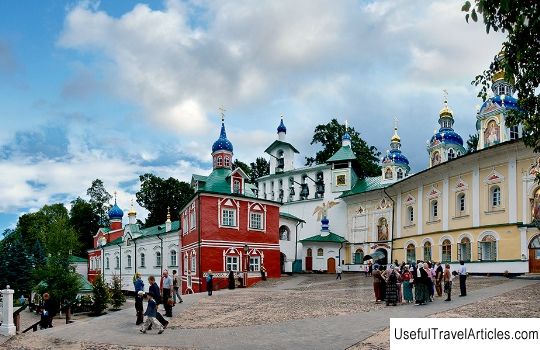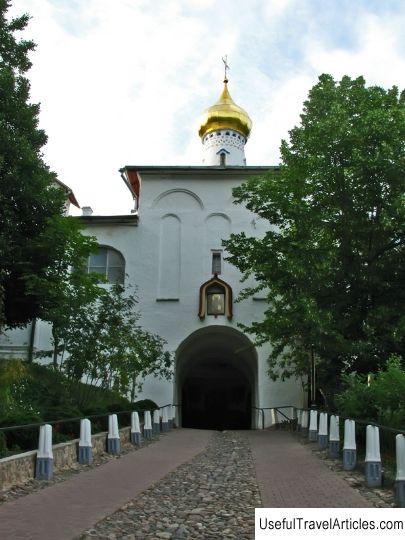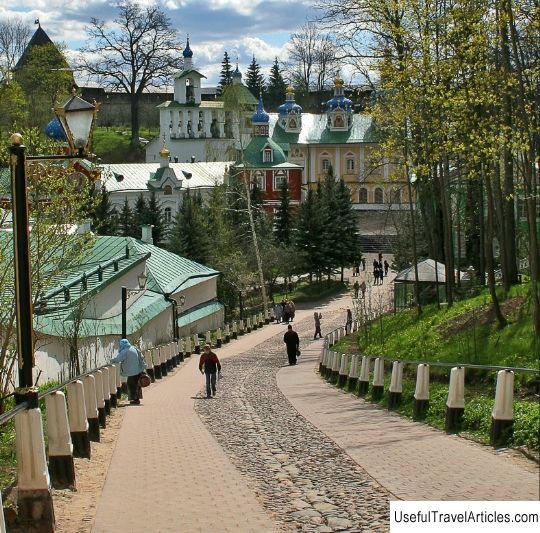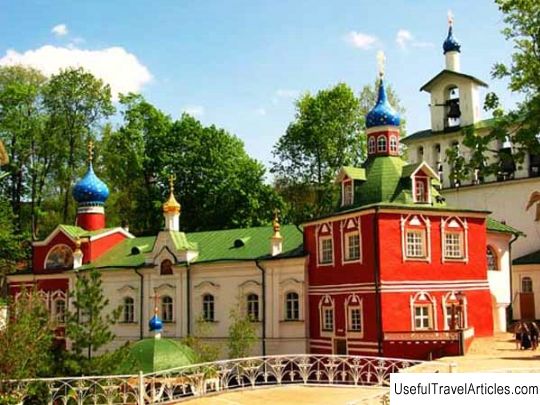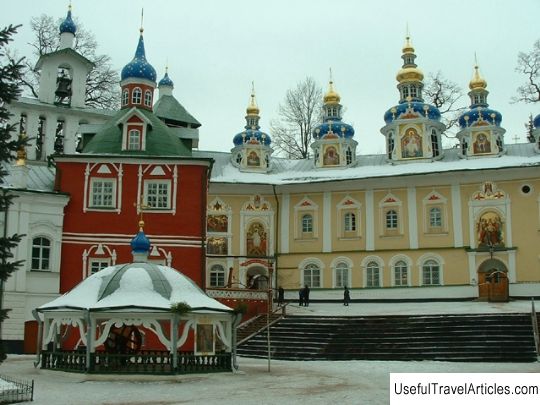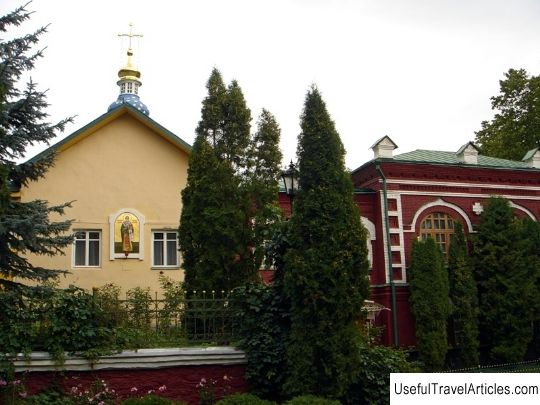Belfry of the Pskov-Pechersky Monastery description and photos - Russia - North-West: Pechory
Rating: 7,9/10 (748 votes) The belfry of the Pskov-Pechersky monastery description and photos - Russia - North-West: Pechory. Detailed information about the attraction. Description, photos and a map showing the nearest significant objects. Photo and descriptionOn the east side of the Assumption Cathedral there is the main monastery belfry, built of stone and several pillars aligned from west to east. Pskovo Belfry -Pechersky Monastery is one of the largest architectural structures of this type. The belfry has six main spans or bells; at the moment there is also a seventh, which was added much later, which is why an additional tier was formed. The general assembly of bells of the Pskov-Pechersky monastery is one of the largest not only in the Pskov region, but also in the North-Western part of Russia. At the moment, dozens of monuments are concentrated in this place. Sets of bells are placed on the Great Belfry, on the porches of the sacristy, at the clock and on the belfry of the St. Nicholas Church. In the 17th century, the bells were located at the temple of Theodosius and Anthony of the Caves. In the late 18th - early 19th centuries, there was a bell tower built of wood at the temple of Dmitry Rostovsky. Over time, the number of bells constantly changed: new ones were bought, old ones were poured, and some were given to the attached churches. There were cases when unusual trophy bells were donated to the monastery, and also specially made as a contribution. For example, in the bell tower of the Church of Theodosius and Anthony of the Caves in the 60s of the 17th century, there were two Bethlehem bells. In addition, in addition to two ringing bells and two surf bells, there was an evangelist bell that weighed more than 25 poods and was donated to the monastery by the famous Ivan Musorgsky, who was the ancestor of the great composer. On the eastern side of the belfry, in a separate tower, there is a clock that has existed here since the 16th century. The set, which is now located on the Great Belfry, has 17 bells of various sizes and weights. The bells have no names, but still some names of the groups have survived: "Dinky", large bells, "Barge Haulers", "Perebory". The Great Belfry has five bells, cast in the 16th century; the latest bells were cast in the 19th century. From the side of the clock there are two eastern aisles, which are occupied by the bells "Prazdnichny" and "Polyelein", and two bells "Dinka" hang above them. This is followed by bells of medium size, located in the third and fourth spans, and in the last couple of spans - bells forming a group of so-called "Burlaks". The main set of the Great Belfry consists of the listed bells, including the "Everyday" bell, which is in the seventh span. The casting of the "Festive" bell took place in May 1690 directly in the monastery. The necessary information regarding its weight is lacking, but judging by its size, we can say that it was the heaviest bell on the belfry. In order to place this bell on the second floor of the belfry, the craftsmen had to cut the pillars, because the span was too small for that. The bell was made by a master from Pskov Fyodor Klimentyev, which became the best example of his work. The lightness and clarity of the lines are perfectly combined with the decor, indicated in the form of two embossed lines. The "polyeleos" bell was cast on May 21, 1558 by the decree of Cornelius, hegumen of the Pechersk monastery. It was made by foundries from Pskov: Login Semenov and Kuzma Vasiliev. This is the second largest bell located on the Great Belfry. The casting of the "Hour" bell was carried out on February 14, 1765 in the city of Moscow, namely at the Dmitry Pirogov factory. The bell weighs 1818.2 kg. The upper span of the Great Belfry was built in the 17th century. Most likely, initially, it was supposed to place a signal bell here, which in 1765 was replaced by "Everyday". "Dinky" is a set of four bells that are suspended in two spans from the east side. “Barge Haulers” and “Perebory” are two groups of medium-sized bells, the largest of which is “Lenten”. In the 16-17th centuries, there were two clock bells. Most likely, during this period of time, a methodical ringing was also established, which had a signal function.        We also recommend reading St. Nicholas' Collegiate Church description and photos - Ireland: Galway Topic: Belfry of the Pskov-Pechersky Monastery description and photos - Russia - North-West: Pechory. |
